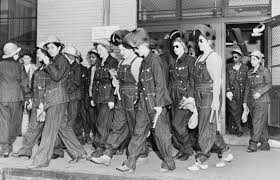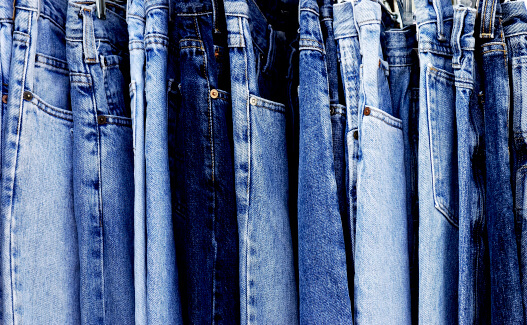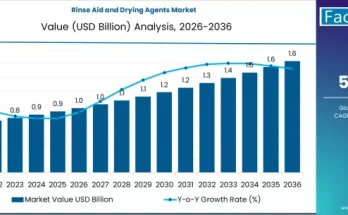Denim jeans – an iconic wardrobe staple that has stood the test of time. From the rugged workwear of the 19th century to the fashion-forward styles of today, jeans have evolved into a multi-billion dollar industry. In this article, we will explore the growth of the denim jeans industry and shed light on what makes it such a resilient and evergreen market.
1. A Rich History:
Denim jeans have a rich history that dates back to the mid-1800s when they were primarily worn by miners and cowboys due to their durability. Over time, jeans transitioned from being strictly workwear to a fashion statement. The introduction of rivets by Levi Strauss in the late 1800s revolutionized the industry, making jeans even more durable and long-lasting.
2. Cultural Influence:
Jeans quickly became a symbol of rebellion and counterculture in the mid-20th century, as they were adopted by youth movements such as the greasers, beatniks, and later, the hippies. This cultural influence propelled jeans into the mainstream, making them a must-have item for people of all ages and backgrounds.
3. Evolving Fashion Trends:
One of the key factors contributing to the growth of the denim jeans industry is its ability to adapt to ever-changing fashion trends. Designers and brands continuously innovate by introducing new cuts, washes, and styles to cater to diverse consumer preferences. From skinny jeans to bootcut, distressed to acid wash, the variety of options available ensures that there is a pair of jeans for everyone.
4. Global Market Reach:
The denim jeans industry has a global presence, with consumers from all corners of the world embracing this timeless trend. The demand for jeans is not limited to any particular region or demographic, making it a highly lucrative market for both established brands and emerging players. Furthermore, the rise of e-commerce has made it easier for consumers to access and purchase jeans from anywhere, further fueling the industry’s growth.
5. Sustainable Practices:
As sustainability becomes an increasingly important consideration for consumers, the denim jeans industry has responded by adopting more eco-friendly practices. Many brands now focus on reducing water usage, using organic cotton, and implementing recycling initiatives. This commitment to sustainability not only aligns with consumer values but also ensures the long-term growth and viability of the industry.
Why is Denim So in Demand? – An Industrial Perspective
Denim continues to be in high demand due to several factors that make it a sought-after fabric in the fashion industry.
From business point of view, a new research suggests that the global denim jeans market is expected to garner a market value of more than US$ 150 Billion in a few years. The report focuses on the Prominent Drivers of Denim Jeans Market.
From an industrial perspective, here are some key reasons why denim remains popular:
Durability and Longevity
Denim is known for its exceptional durability and longevity. The tightly woven cotton fabric used in denim production makes it resistant to wear and tear, ensuring that denim garments can withstand frequent use and retain their shape and quality over time. This durability factor appeals to consumers who seek long-lasting and reliable clothing options.
Versatile and Timeless

Denim is an incredibly versatile fabric that can be dressed up or down for various occasions. It effortlessly transitions from casual to semi-formal settings, making it suitable for a wide range of fashion styles. The timeless appeal of denim also contributes to its demand, as it never goes out of fashion and can be worn year after year.
Comfort and Fit
Denim offers both comfort and a flattering fit. The cotton-based fabric is breathable and allows for ease of movement, making it comfortable to wear for extended periods. Additionally, denim’s ability to mold to the body over time enhances its fit, ensuring that it becomes more comfortable and personalized with each wear.
Wide Range of Styles and Washes
The denim industry continually introduces new cuts, washes, and finishes to cater to evolving fashion trends and consumer preferences. From skinny and straight-leg jeans to flares and wide-leg styles, there is a denim fit for every body type. Furthermore, the availability of different washes, such as dark indigo, faded, or distressed, allows consumers to choose denim that aligns with their personal style.
Global Popularity and Cultural Influence
Denim’s popularity is not limited to any particular region or demographic. It has a global appeal that transcends cultural boundaries. The influence of denim in popular culture, from movies to music, has further solidified its status as a fashion staple. This widespread recognition and cultural significance contribute to the ongoing demand for denim.
Sustainability Efforts
In recent years, the denim industry has also made significant strides in adopting sustainable practices. Brands are increasingly incorporating organic cotton, reducing water usage, implementing recycling initiatives, and exploring eco-friendly dyeing processes. These sustainability efforts resonate with environmentally conscious consumers, further boosting the demand for denim.
A Brief History of Denim
Denim, the fabric that jeans are made of, has a fascinating history that spans centuries.

Here is a brief overview of the evolution of denim:
1. Origins in France
Denim finds its roots in Nîmes, France, where a sturdy fabric called “serge de Nîmes” was produced in the 17th century. The fabric gained popularity for its durability and was primarily used for workwear.
2. Birth of Indigo Dye
During the 18th century, indigo dye was introduced to the fabric, giving it a characteristic blue color. Indigo dye was derived from the indigofera plant, and its introduction revolutionized the denim industry, creating the signature blue jeans we know today.
3. Levi Strauss and the Birth of Jeans
In the mid-19th century, Levi Strauss, a German-American businessman, recognized the need for durable pants for miners during the California Gold Rush. He partnered with a tailor named Jacob Davis and together, they patented the first pair of riveted denim pants in 1873. These rivets reinforced stress points, making the pants incredibly durable. This marked the birth of jeans as we know them.
4. The Popularity of Denim
In the early 20th century, jeans gained popularity not only among miners and cowboys but also among the working class. The durability and comfort of denim made it a practical choice for laborers. However, it wasn’t until the mid-20th century that jeans became a symbol of rebellion and counterculture, popularized by icons like James Dean and Marlon Brando.
5. Denim Goes Mainstream
In the 1960s and 1970s, denim jeans transitioned from counterculture fashion to mainstream style. Fashion designers started incorporating denim into their collections, and various denim styles emerged, including flared jeans, bell-bottoms, and high-waisted jeans.
6. Denim Today
In the contemporary fashion landscape, denim continues to be a versatile and enduring fabric. The denim industry has evolved to cater to diverse consumer preferences, offering a wide range of cuts, washes, and finishes. From skinny jeans to boyfriend jeans, distressed to acid wash, denim remains a staple in every wardrobe.
Sustainability in the Denim Industry
Sustainability in the denim industry refers to efforts made to reduce the environmental impact of denim production and promote ethical practices throughout the supply chain. It involves various initiatives aimed at minimizing resource consumption, reducing pollution, and improving social responsibility.

Here are some key aspects of sustainability in the denim industry:
Organic and Recycled Materials
Brands are increasingly using organic cotton, which is grown without the use of harmful pesticides and chemicals, reducing environmental impact. Additionally, recycled denim and other recycled materials are being incorporated into denim production, reducing waste and conserving resources.
Water and Energy Conservation
Denim production traditionally requires significant amounts of water and energy. Sustainable practices focus on implementing water-efficient technologies, such as laser and ozone treatments, to reduce water consumption and minimize the use of harmful chemicals. Energy-efficient manufacturing processes are also adopted to decrease energy consumption and carbon emissions.
Responsible Manufacturing
Brands are striving to ensure safe and fair working conditions for employees in denim factories. This includes fair wages, reasonable working hours, and compliance with labor laws. Ethical practices also extend to the sourcing of raw materials, with an emphasis on transparency and traceability to ensure responsible supply chains.
Recycling and Upcycling
Denim recycling programs encourage consumers to donate or repurpose old denim garments instead of discarding them. This reduces textile waste and promotes circularity by transforming old denim into new products or using it as raw material for other industries.
Consumer Education and Awareness
The denim industry is increasingly focused on raising consumer awareness about the environmental and social impacts of denim production. By educating consumers about sustainable practices and promoting responsible purchasing decisions, the industry aims to create a more conscious and informed consumer base.
The denim jeans industry has come a long way from its humble beginnings as workwear to becoming a fashion phenomenon that continues to thrive. Its growth can be attributed to a rich history, cultural influence, evolving fashion trends, global market reach, and a commitment to sustainability. As consumers’ love for jeans endures, it is safe to say that the denim jeans industry will continue to evolve, innovate, and remain a timeless trend for years to come.
Also Read:



